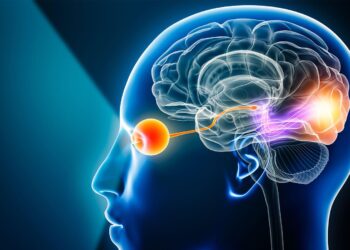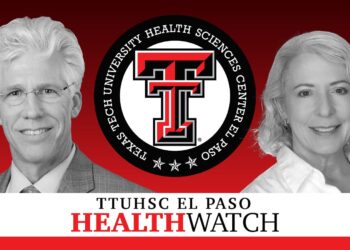CHICAGO — An artificial intelligence (AI)-based study of home monitoring for neovascular age-related macular degeneration (AMD) suggested a potential annual savings of $3,200 per patient, with improved treatment precision.
After retrospectively reviewing randomly selected home optical coherence tomography (OCT) images, a panel of retina specialists would not have treated patients on scheduled treatment days in 43% of cases. When the 15 specialists reviewed the same image, nine (60%) said they would not have treated the patient on the day treatment actually occurred.
Earlier treatment was recommended in more than half of cases, and in only one of 150 cases did the retina specialists say that recommended treatment coincided with the actual day of treatment, reported Paul Hahn, MD, PhD, of NJRetina in Teaneck, New Jersey, at the American Academy of Ophthalmology (AAO) meeting.
“These results show that home OCT can both reduce the need for treatment when possible but also ensure timely treatment for the patient in cases of early disease recurrence, potentially preserving their vision,” Hahn said in a recorded message that accompanied a poster presentation. “We then tried to estimate how these changes in decisions, if generalized to a broader neovascular AMD population, would impact patients, caregivers, and the broader healthcare system.”
“We found that by reducing productivity loss for patients and caregivers and their frequent and extended office visits, the optimized visit schedules afforded by home OCT could save productivity loss of up to $250 million per year in the United States alone,” he added. “We also found that optimized treatment through home OCT monitoring could have direct medical cost savings to the United States healthcare system, including drugs and in-clinic procedures, of up to $3.5 billion per year.”
Cost, Accuracy, Acceptability Concerns
The analysis seemingly addressed some of the concerns raised at the 2023 AAO meeting, following a presentation on home OCT monitoring. The concerns included the accuracy and acceptability of home OCT and the potentially added cost of the home devices.
Earlier this year, the FDA cleared the first OCT device designed for home use, the SCANLY Home OCT device by Notal Vision. As described by Hahn, home OCT allows patients at home to acquire OCT images that previously could be obtained only in an ophthalmologist’s office. Coupled with AI analysis, the scanner produces a large volume of data for review.
“Our motivation for this study was to see if OCT imaging obtained near-daily at home changes decision making compared to OCT images performed per standard of care in the office,” said Hahn. “If so, we wanted to estimate the clinical and socioeconomic impact of this novel technology on OCT-based patient monitoring.”
The analysis consisted of OCT-acquired data from 60 time segments for 29 patients monitored for a cumulative total of 129 months. Length of the time segments ranged from 30 to 62 days. Each of the 15 participating retina specialists reviewed 10 time segments (one common segment and nine randomly selected segments).
A key outcome measure was the number of times home OCT-based decisions differed from the actual treatment decisions. Additionally, when retina specialists recommended earlier treatment than what actually occurred, how often did the timing vary by more than a week?
For 60 of the 150 (43%) segments included in the analysis, retina specialists would not have treated the patient when treatment actually occurred, meaning that the treatment was not necessary, said Hahn. In 57% of cases, home OCT imaging led the retina specialists to recommend earlier treatment. In a third of cases, they recommended treatment 7 or more days earlier than actual treatment. On average, early treatment was 9.6 days before actual treatment (range of 1 to 40 days).
Treatment recommendations based on home OCT data were within 7 days of actual treatment in only 33 of 150 cases (22%).
“While I expected home OCT data to have some influence on decision making, the magnitude was certainly a surprise,” said Hahn.
Given that clinicians have access to 30 times more data with home OCT, “this impact makes sense,” he added.
Using statistical modeling, the investigators sought to determine potential cost savings with home OCT. Assuming a 32.5% reduction in visits and 1.1 million patients with neovascular AMD resulted in a $250 million savings, including productivity loss and lower expenditures. The analysis took into account patient preparation, travel time, waiting, actual treatment, and recovery.
Using the same assumptions for reduced number of visits, total number of patients, and an estimated $9,898 in direct costs of care per patient, Hahn and colleagues found that use of home OCT offered potential annual savings of $3,214 per patient and a cumulative savings of $3.5 billion.
First Report of Pivotal Trial
Although the Notal Vision device is available for use, data from the pivotal trial that supported the approval had not been reported, said Eric Schneider, MD, of Tennessee Retina in Nashville, during a separate AAO presentation. The study had two components: a visualization study and an AI study.
The visualization study was designed to determine whether patients could adequately perform OCT imaging at home and the degree of agreement between home and office OCT for detecting total retinal hyporeflective space, which comprises key biomarkers of retinal status. The study involved 185 patients and showed values of 0.86 and 0.87 for positive and negative predictive agreement, meeting the prespecified endpoint of >80% agreement.
The visualization component also showed that 96.1% of patients were able to set up and use the home OCT device. They performed an average of 5.9 scans per week, and scan time averaged 48 seconds.
The AI component assessed repeatability of home- and office-based OCT and involved 336 patients. Patients performed multiple home OCT scans with two different scanning devices and AI-based grading. Additionally, each patient had a single in-office OCT assessment, which was reviewed by multiple independent graders. The results showed less variability with home OCT (11.1% vs 16.4%). Comparison of the two imaging and grading processes showed a high level of agreement.
“Patients demonstrated a high success rate and adherence to self-imaging at home,” Schneider said in conclusion. “Comparison of home OCT with in-office OCT for visualization of total retina hyporeflective spaces met the prespecified agreement endpoint. The comparison of AI-based estimation of hyporeflective spaces and human graders showed good precision and agreement.”
“The overall system performance met a high bar of efficacy and safety to receive de novo marketing authorization from the FDA,” he noted.
Disclosures
Both studies were supported by Notal Vision.
Hahn disclosed relationships with Alcon, Adverum, Alimera, Apellis, DORC (Dutch Ophthalmic Research Center), EyePoint, Genentech, Iveric Bio, Neurotech, Alexion, Notal Vision, OcuTerra, Regeneron, Regenxbio, and Samsara.
Schneider disclosed relationships with Notal Vision, Carl Zeiss, Apellis, Boehringer Ingelheim, Clearside Biomedical, Iveric Bio, Oculis, and Regeneron.
Primary Source
American Academy of Ophthalmology
Source Reference: Hahn P, et al “Health and socio-economic impact of home OCT monitoring in neovascular age-related macular degeneration” AAO 2024; Abstract PO423.
Secondary Source
American Academy of Ophthalmology
Source Reference: Schneider E, et al “Pivotal trial outcomes of AI-based home OCT: A qualitative and quantitative comparison with in-office OCT” AAO 2024; Retina Meeting, Late-Breaking Abstracts, Part 1.
Source link : https://www.medpagetoday.com/meetingcoverage/aao/112494
Author :
Publish date : 2024-10-21 15:09:42
Copyright for syndicated content belongs to the linked Source.


![author['full_name']](https://clf1.medpagetoday.com/media/images/author/charlesBankhead_188.jpg)












